-
Car Reviews
- All reviews
- Midsize SUVs
- Small cars
- Utes
- Small SUVs
- Large SUVs
- Large cars
- Sports SUVs
- Sports cars
- Vans
Latest reviews
- Car News
-
Car Comparisons
Latest comparisons
- Chasing Deals
We drive an early pre-launch example of Mitsubishi’s all-important, all-new Triton. Does it have the right stuff to challenge Ford Ranger and Toyota Hilux?
Mitsubishi’s all-new sixth-generation Triton is almost here. And based on an early drive of a pre-production vehicle, we would advise you to wait until February before buying any brand-new dual-cab ute. The first impression of the new Triton is that promising.
The new Triton replaces the ageing existing fifth-gen model, which feels very long in the tooth, outclassed and outgunned by newer generation dual-cabs such as Ford’s excellent Ranger. In lieu of an inferior product, Mitsubishi had leant on value. At least the Triton was cheap.
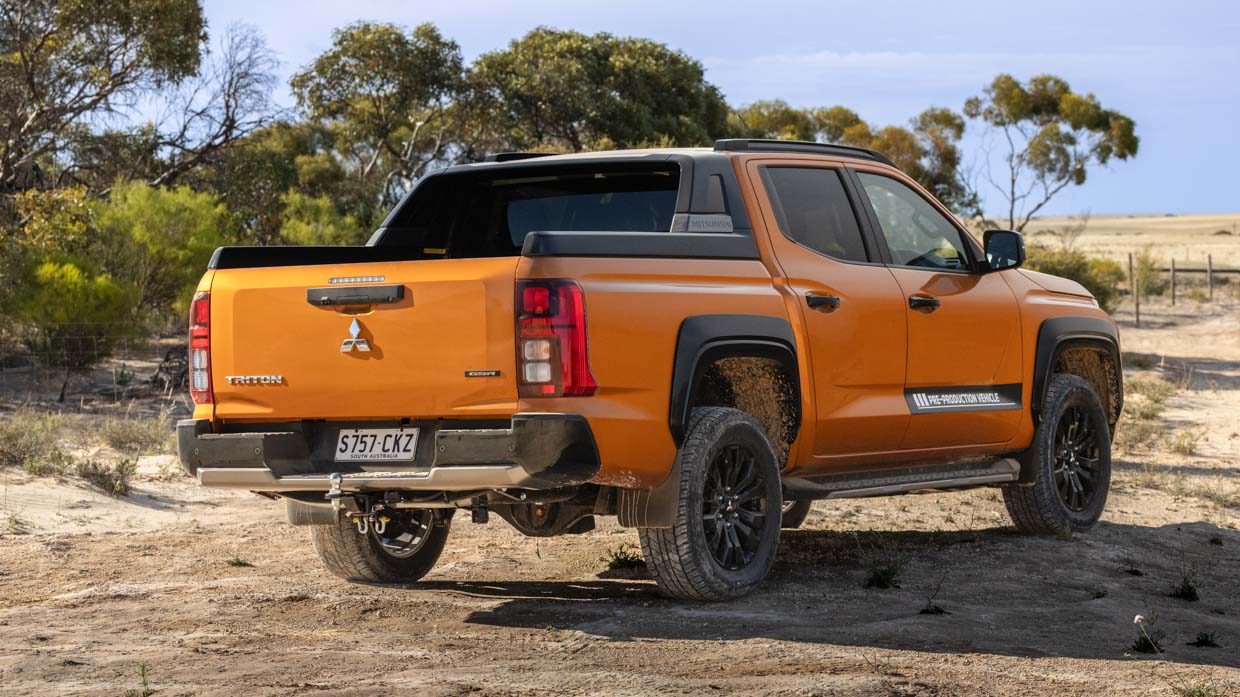
The new one will be more expensive. The range kicks off at $43,690 list in 4×2 GLX dual-cab auto form, though today we’re testing the top-spec GSR at $63,840 before on-roads.
Clearly Triton hopes to compete more on merit and less on price point.
To do that, Mitsubishi has redesigned the Triton from the ground up, a properly new, “clean sheet” design. There’s a stiffer ladder chassis, while the body itself is larger: 15mm longer, 50mm wider and with a 130mm-longer wheelbase, which helps extend the tray by 35mm.
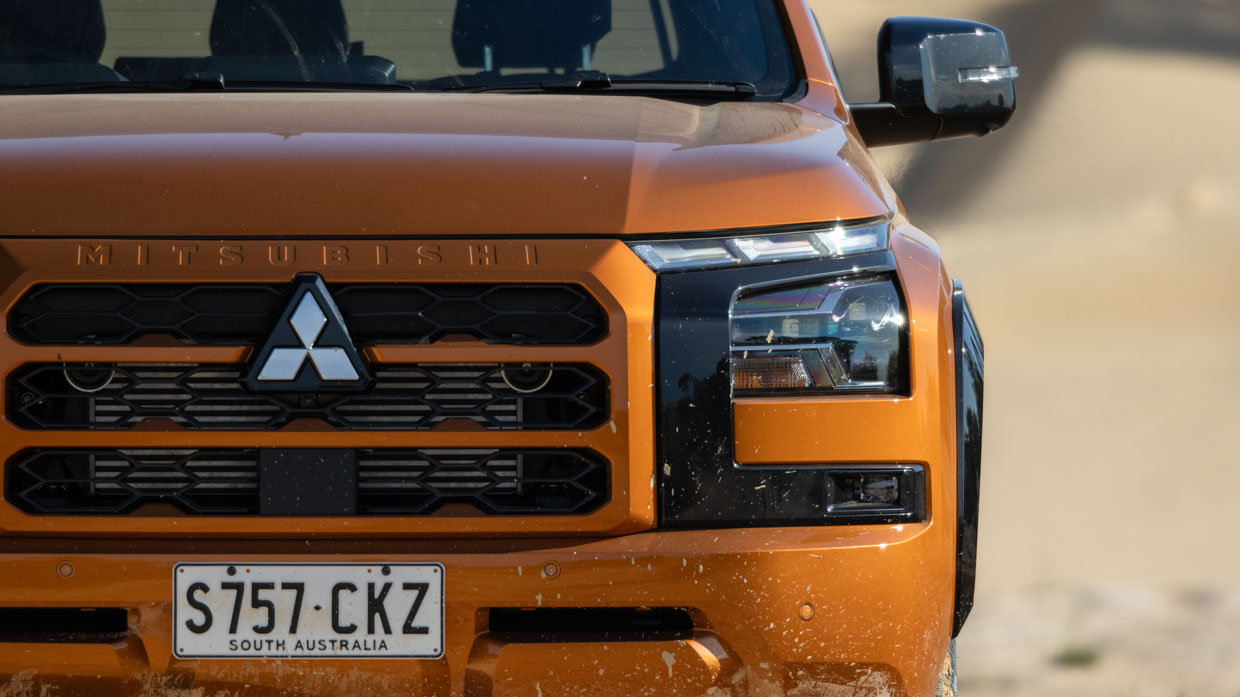
Styling, as ever, is subjective, but we think it’s a much better looker – more rugged, with its squared-off wheel arches – and less pointy, squinty and angular. That’s even if it channels quite a bit of previous-generation Amarok from some angles, especially the rear; and sort of baby Chevrolet Silverado from others, like the front.
In the metal, it certainly has plenty of presence. And i’ts far from a small vehicle.
Under the bonnet, there’s a new 2.4-litre twin-turbo diesel four-cylinder offering “10 percent more power, 10 percent more torque and 10 percent more efficiency”, or 150kW and 470Nm to be exact.
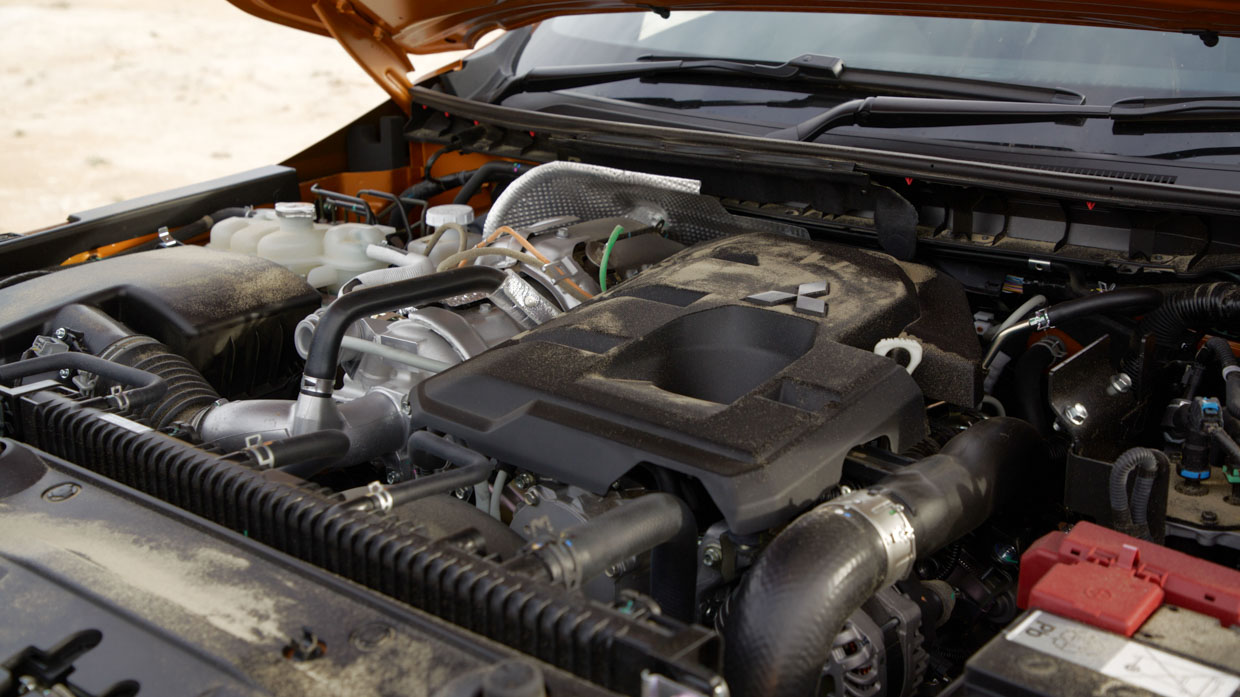
Peak torque arrives from just 1500rpm, much lower in the revs than the current model’s 2500rpm. In addition to the extra grunt, the braked towing capacity climbs 400kg to 3.5 tonnes, crucially now matching Ranger and Hilux. The transmission is a six-speed automatic, while Mitsubishi says that a hybrid version is in the works.
The biggest news of all is the interior and safety offered, which are much improved. The interior especially.
It’s a massive step-up on the current Triton. Jump from an old Triton into the new one, as we did at the launch, and it’s like travelling 10 years forward in time – maybe even more.
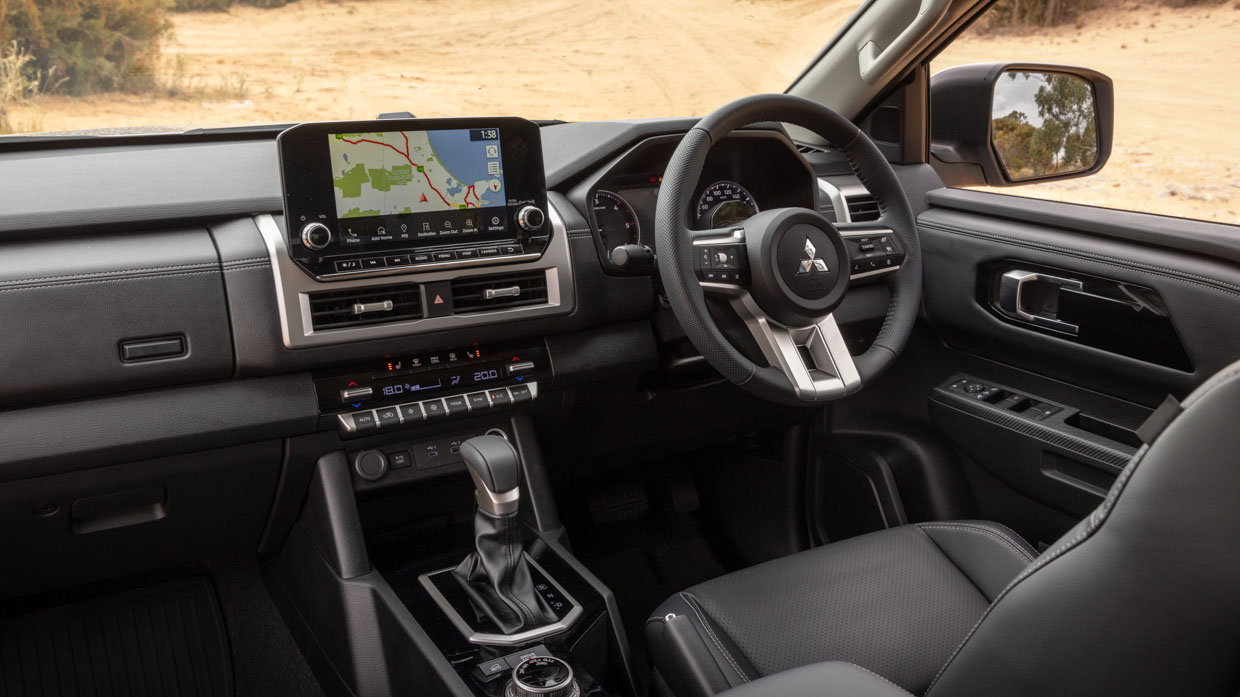
Gone is the dated chrome surrounds and lashings of fake stitching, in their place smart, somewhat contemporary piano blacks, metal-look trim and more modern fonts. There’s a wireless phone charger, as well as wireless Apple CarPlay and wired Android Auto.
The front seats are plushly padded and very comfortable, while cabin storage has improved, as has overall space. That’s even if there’s still a manual handbrake, analogue dials and a smaller, 9.0-inch infotainment display that doesn’t match some rivals for size, even in the top-spec Triton GLS.
These are all things which undoubtedly reduce the cost, however, and are savings that many dual-cab buyers might be happy to bank.
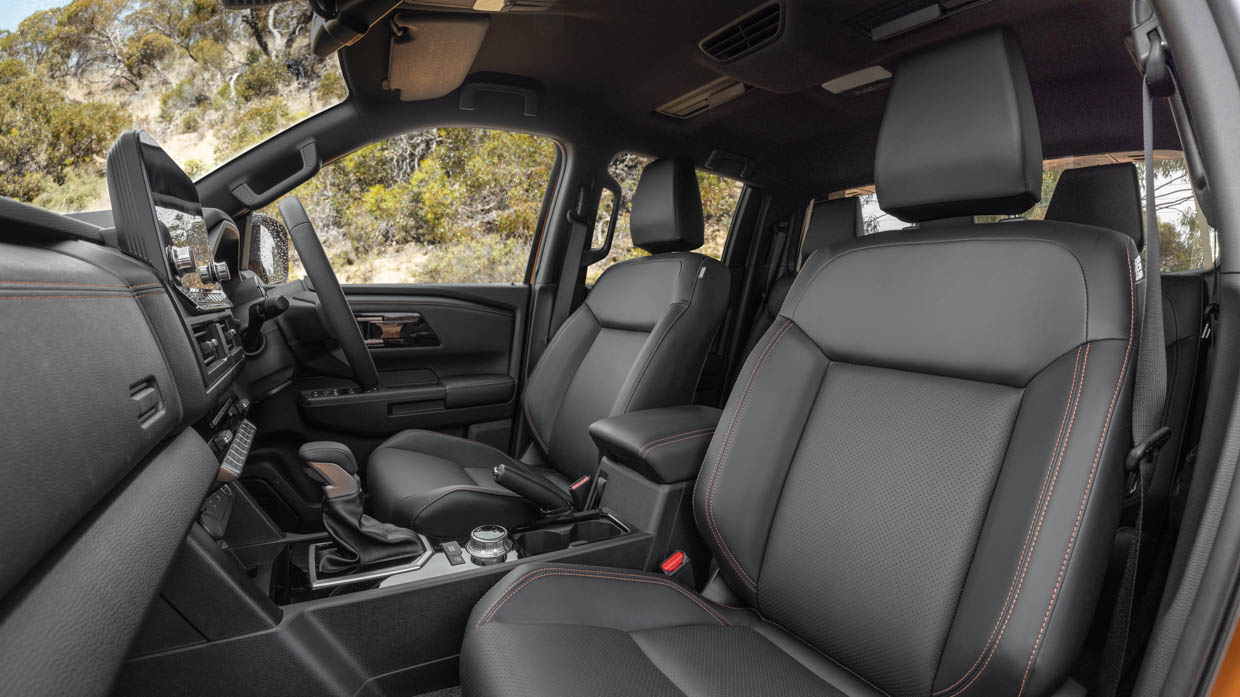
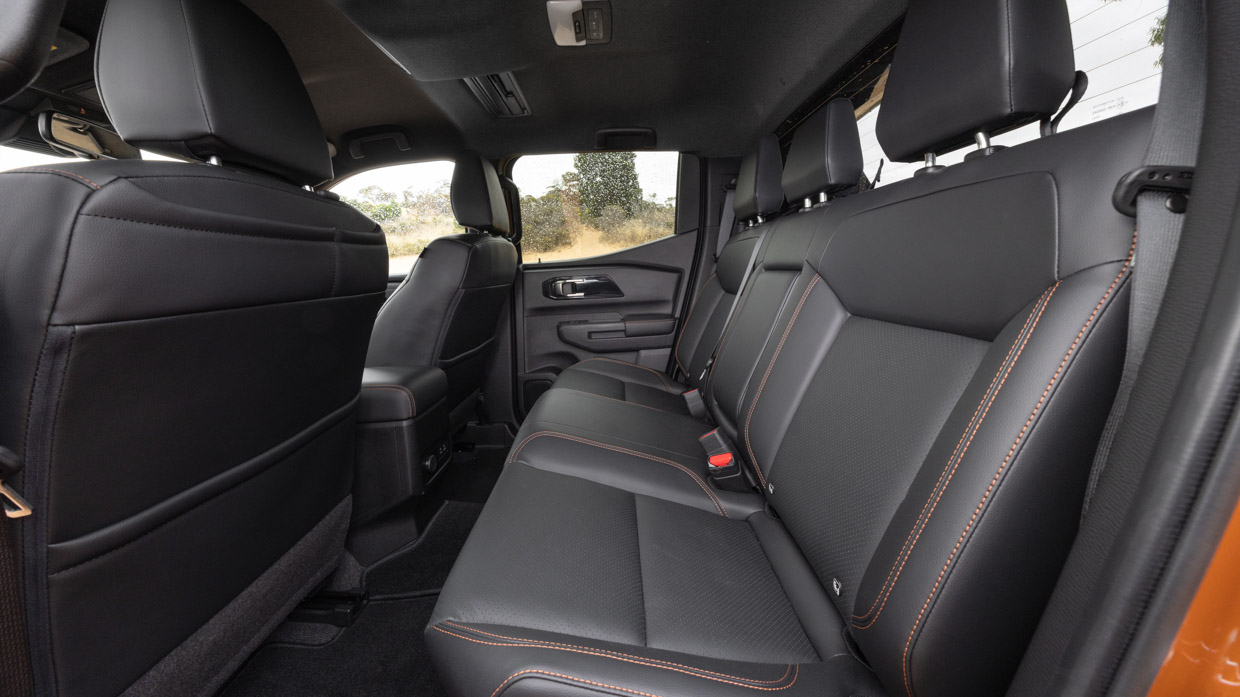
Triton’s safety offering, however, is hard to beat. Ford managed to get Ranger into ANCAP’s crash labs before it introduced the new, stricter 2023 criteria, meaning Mitsubishi had to work harder to get five stars for Triton.
And it has, with all the safety gubbins you could hope for, including a new centre airbag, cutting-edge AEB with junction-assist and reverse AEB. Ignoring the fact the Triton is still a lumbering two-tonne, ladder-frame vehicle with rear drum brakes and leaf springs, it’s probably one of the safest dual-cab utes offered to date.
Although yet unrated, Mitsubishi Australia expects ANCAP to test Triton early next year.
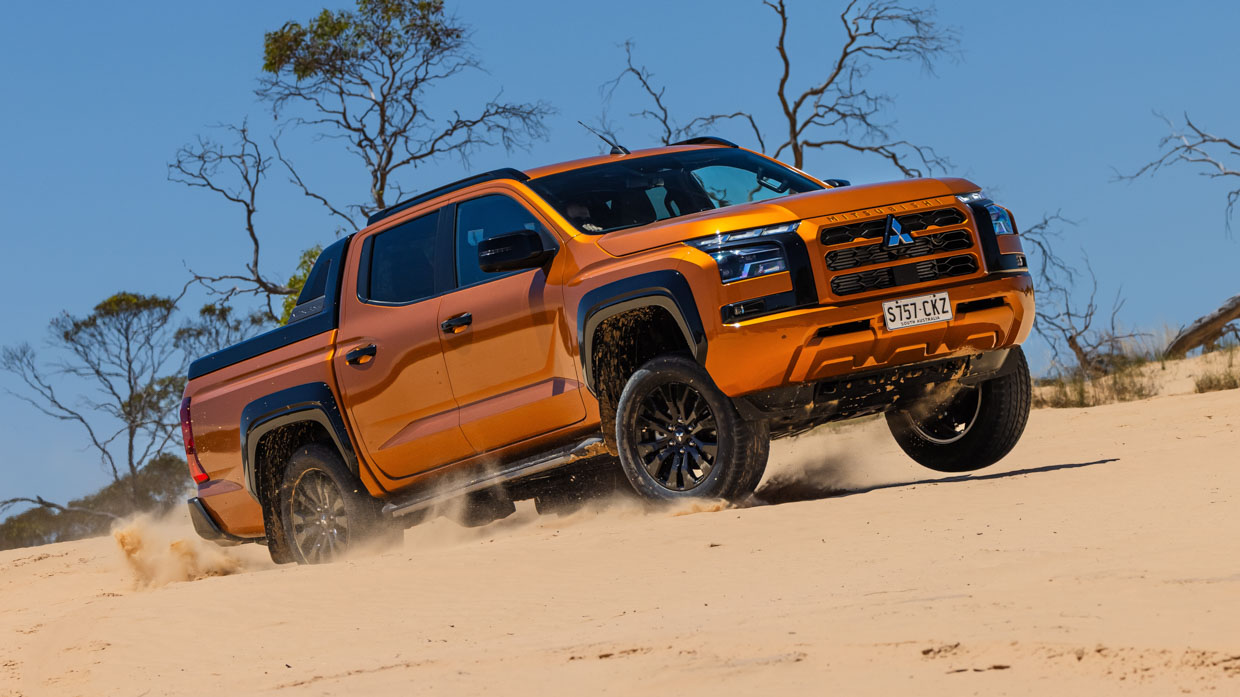
As for the driving, our opportunity to get an early sampling of one of the most important new vehicles of 2024 was restricted to some sand dunes in South Australia in a pre-production example of the GSR.
Straight away the steering felt a night-and-day improvement over the old vehicle. Newly fitted with electric power steering – the Triton has persisted with hydraulic steering until now, endearing on a sports car but less so on a passenger-carrying vehicle – that’s now much lighter, making the Triton a lot easier to drive.
The engine itself pulls hard from low in the rev range with a satisfying amount of torque, at least in the first two gears. This new Triton, based on this first impression, has a good amount of muscle.
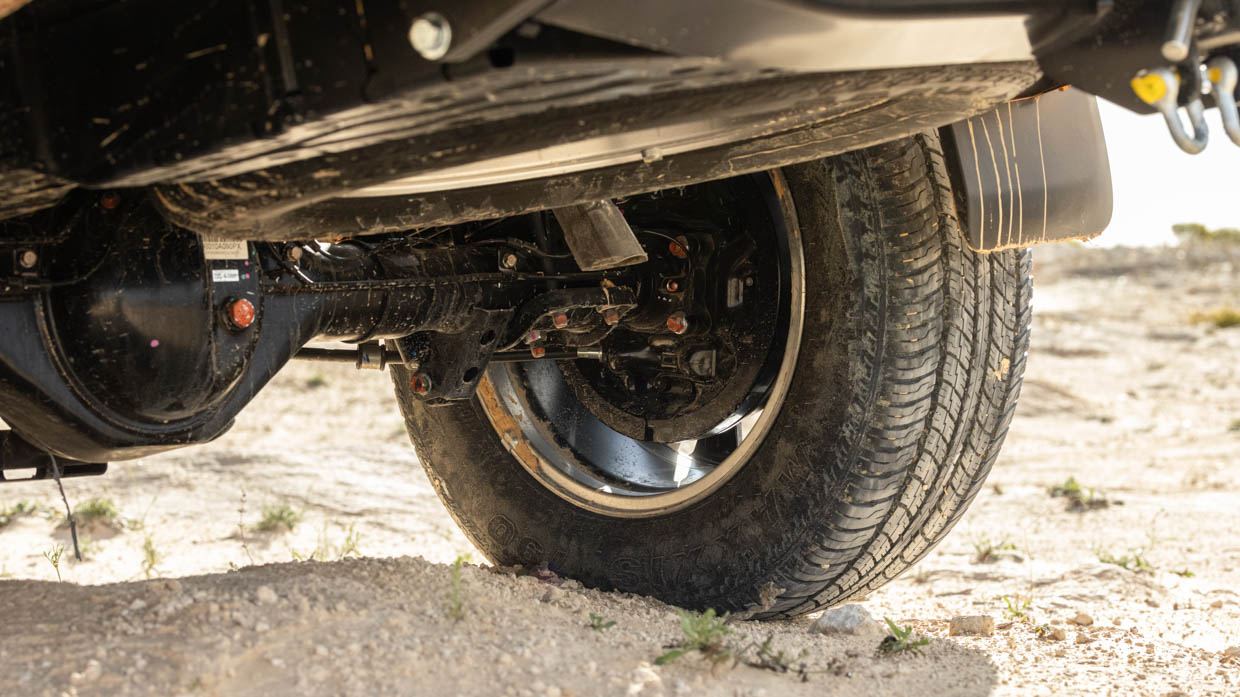
In its presentations to local media, Mitsubishi Australia proudly proclaimed the virtues of the ride quality of its locally tuned suspension, but we’ll have to wait until the proper local launch in February for any sort of verdict in this regard on real roads. Testing a vehicle with 1.24bar (18psi) in its tyres and on sand, so our drive impressions are not entirely representative.
One thing we can say definitively is the new Triton excels on sand. In high-range four-wheel drive with the centre diff locked, the Triton traversed even the gnarliest of sand dunes and sand ruts, instilling plenty of confidence. Sand mode made a tangible difference over Normal drive mode, too.
Of course, we left our first encounter with the new Triton wanting to drive it a lot more. We can’t comment on noise suppression or general refinement, urban or highway manners, towing ability, dynamics, advanced driver assistance systems tuning and are limited on what we can say about the tray – it is a ute, after all.
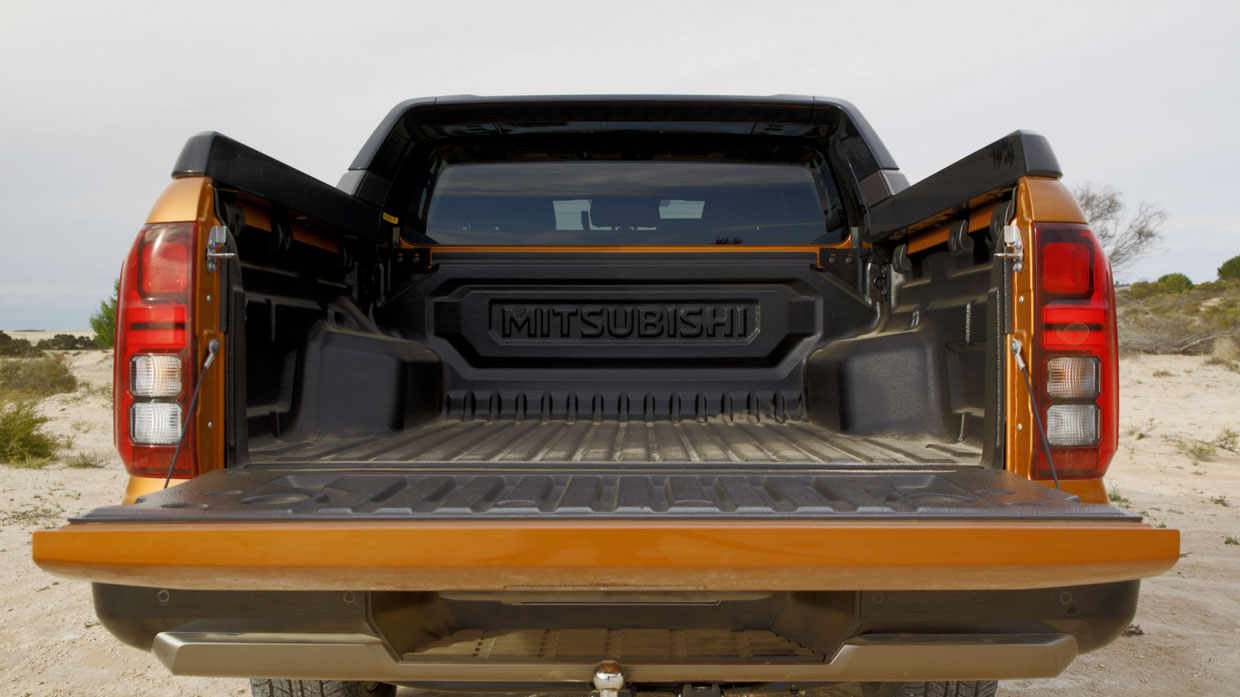
While the tray itself is now 35mm longer, Mitsubishi has not revealed payload, or maximum GVM and GCM figures, simply smiling at us and saying it’s been “upgraded”. (The current Triton GSR’s payload is 900kg.)
There are some other minor things we didn’t love. While overall manoeuvrability is improved with the lighter electric steering – which is now 3.3 turns lock-to-lock, versus 3.7 previously – the actual turning circle is larger, a backwards step for what is already an inherently large and unwieldy vehicle.
The sensor module for the Driver Attention Monitor, too, while a valuable safety addition, is poorly integrated, jutting up from the steering column and blocking the digital instrument cluster screen. With a display that’s only 7.0 inches you probably want to be able to see every bit of it. There’s no full digital instrument cluster here, not even in the high-spec GSR.
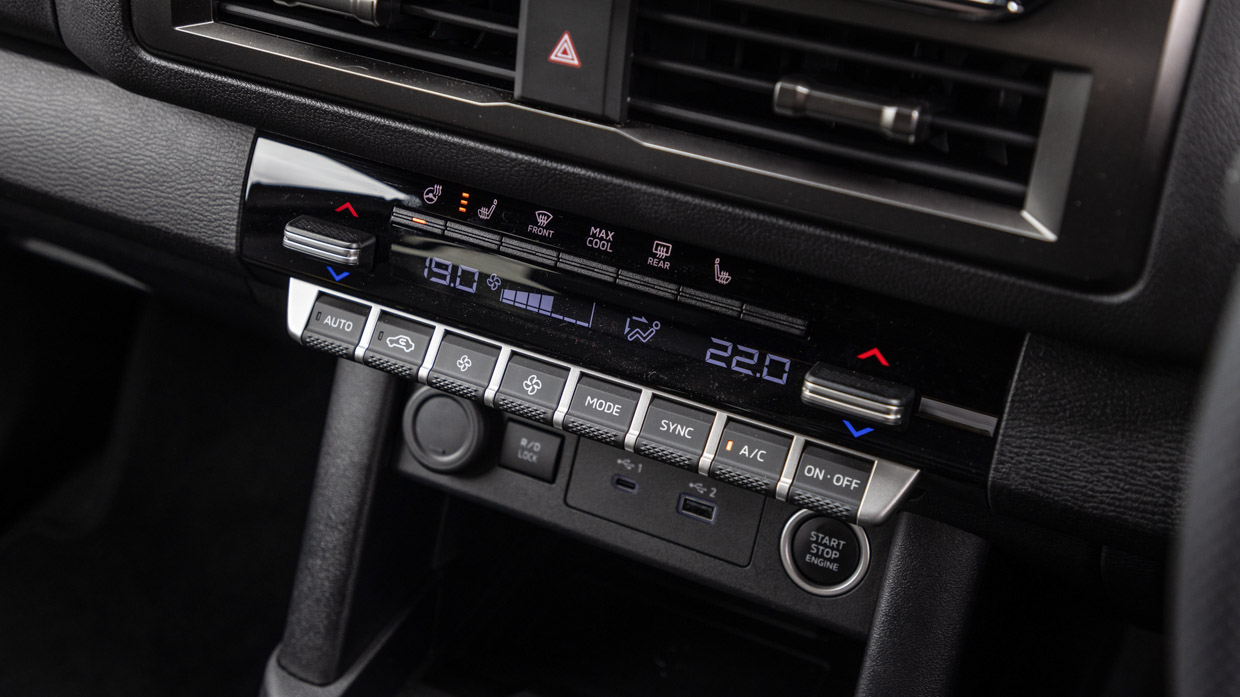
The back-seat air-conditioning could also be better, too. While second row passengers would surely appreciate the comfort by dual-cab ute standards, on a scorching day they might just want the air-conditioning to be colder. That’s even on maximum fan speed and the temperature set to its coolest.
Hopefully this is just a pre-production thing, although on the topic of HVAC, the lack of front-row ventilation for a top-spec grade wouldn’t be something they forgot on the production line, and is a notable omission and a missed opportunity with an entirely new generation vehicle.
Despite the very limited first drive, and our nit-picking, first impressions of the new-generation Triton are so far so good. But the real proof in the pudding will be proper production versions sampled on everyday on-road conditions and on broader off-road terrain beyond sand.

Of course, it’ll also need to go toe to toe with the Ford Ranger and Toyota Hilux in order to test its true mettle.
While Triton prices have risen by up to $7600, a quick glance at the standard equipment lists of the $63,840 Triton GSR and $68,490 Ranger Wildtrak 2.0 casts the Mitsubishi in a very good light. But whether the newcomer is as good to drive remains to be seen.
We’ll have to wait until the new Triton arrives in February 2024 to find out.
About Chasing cars
Chasing Cars reviews are 100% independent.
Because we are powered by Budget Direct Insurance, we don’t receive advertising or sales revenue from car manufacturers.
We’re truly independent – giving you Australia’s best car reviews.
The estimate provided does not take into account your personal circumstances but is intended to give a general indication of the cost of insurance, in order to obtain a complete quote, please visit www.budgetdirect.com.au. Estimate includes 15%^ online discount.
^Conditions Apply
Budget Direct Insurance arranged by Auto & General Services Pty Ltd ACN 003 617 909(AGS) AFSL 241 411, for and on behalf of the insurer, Auto & General Insurance Company Limited(ABN 42 111 586 353, AFSL 285 571).Because we don’t know your financial needs, we can’t advise you if this insurance will suit you. You should consider your needs and the Product Disclosure Statement before making a decision to buy insurance. Terms and conditions apply.
Indicative quote based on assumptions including postcode , 40 year old male with no offences, licence suspensions or claims in the last 5 years, a NCD Rating 1 and no younger drivers listed. White car, driven up to 10,000kms a year, unfinanced, with no modifications, factory options and/or non-standard accessories, private use only and garaged at night.
^Online Discounts Terms & Conditions
1. Discounts apply to the premium paid for a new Budget Direct Gold Comprehensive Car Insurance, Third Party Property Only or Third Party Property, Fire & Theft Insurance policy initiated online on or after 29 March 2017. Discounts do not apply to optional Roadside Assistance.
2. Discounts do not apply to any renewal offer of insurance.
3. Discounts only apply to the insurance portion of the premium. Discounts are applied before government charges, taxes, levies and fees, including instalment processing fees (as applicable). The full extent of discounts may therefore be impacted.
4. We reserve the right to change the offer without notice.